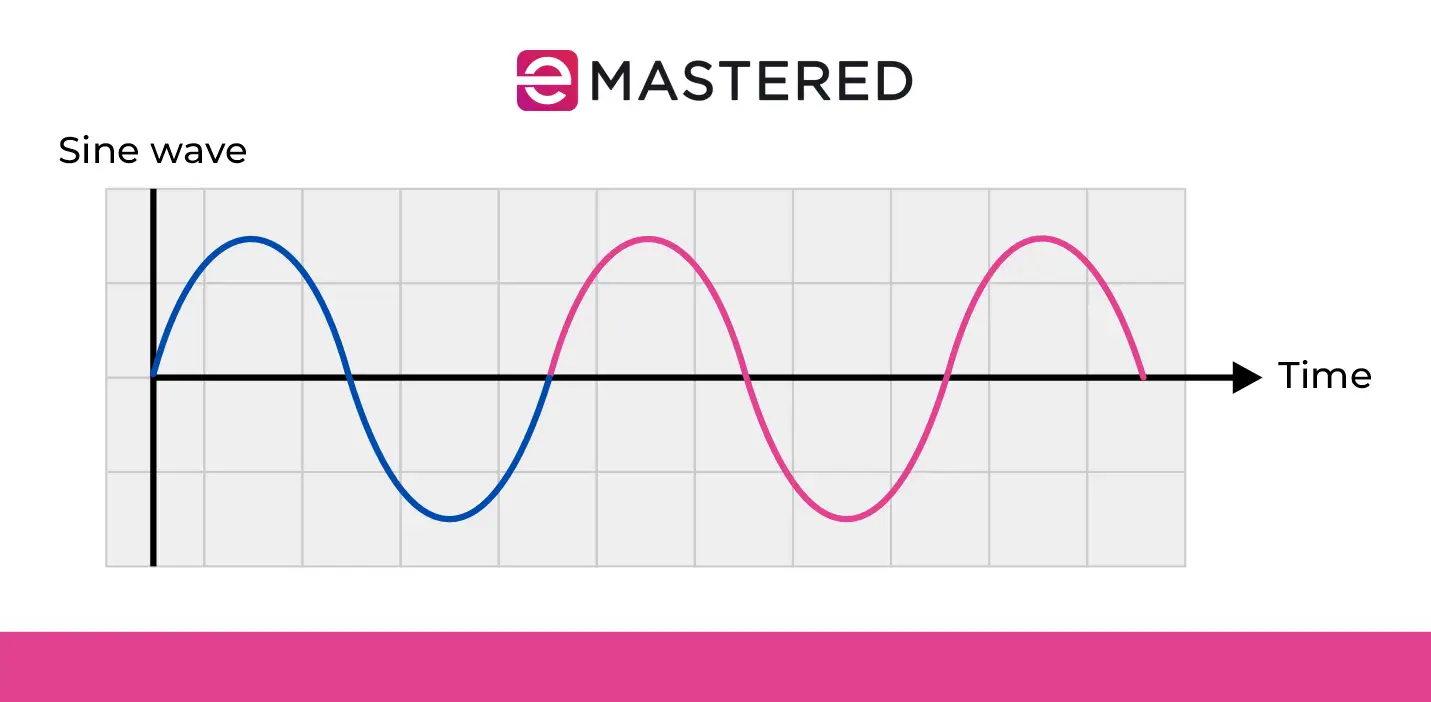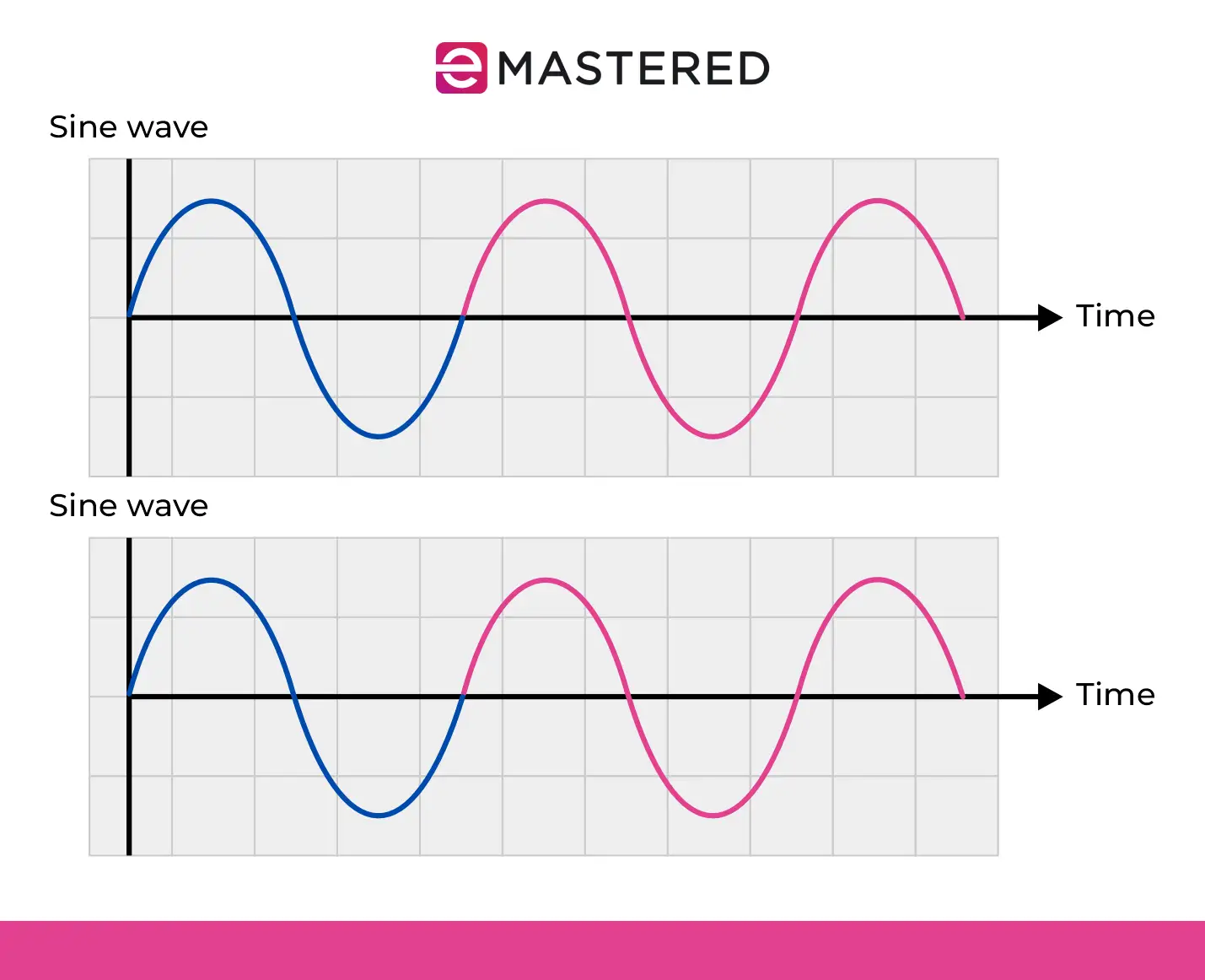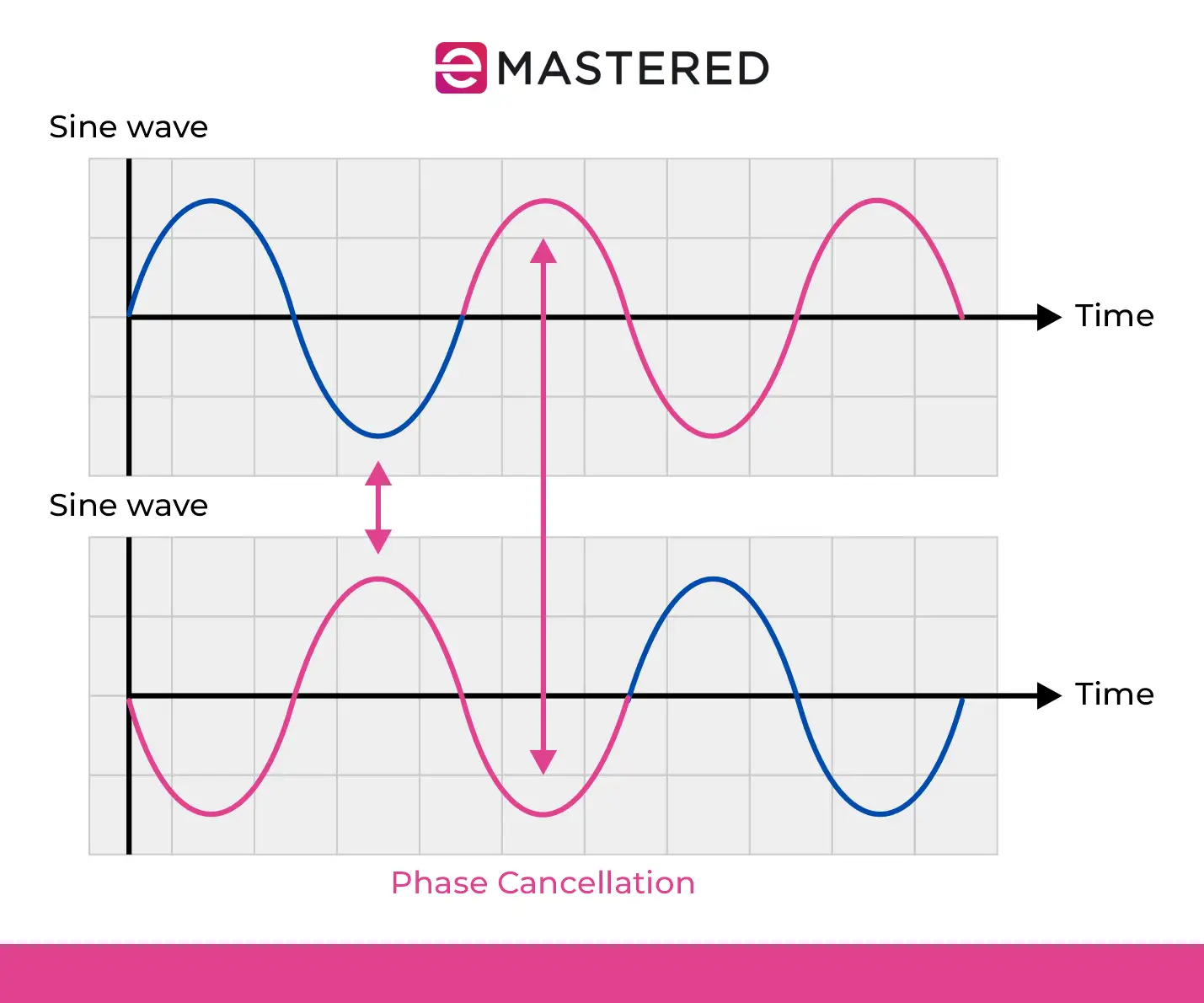Recording and mixing music in your home studio isn't always a walk in the park. Whether you're tracking a drum kit, laying down a stereo acoustic guitar, or trying to get a vocal to sit right in a dense arrangement, chances are you've run into issues with phase, whether you knew it or not.
One of the most important aspects of audio engineering is understanding phase inversion. It's a simple but powerful tool that can mean the difference between a full, punchy sounding mix, and a thin, hollow one.
In this article, we're going to explain what phase inversion is, when it's a problem, when it's a solution, and offer some handy phase inversion audio tricks to make your production shine.
Ready? Set phasers to stun...
What is Phase in Audio?
To get to grips with phase inversion you first need to understand phase itself.
When an engineer talks about phase in audio, they're referring to the relationship between two versions of a sound wave. Specifically, the position of one signal in time, in relation to the other.
A sound wave on it's own has peaks and troughs, like this:

When two signals (from the same, or similar, source) are aligned perfectly - peaks with peaks, troughs with troughs - they are said to be ' in phase '. This reinforces the audio signal, making it louder and fuller.

If we slide these waveforms out of alignment - so the peaks don't match - they become out of phase, or in relative phase. This result is a thinner, quieter sound, kind of like two people trying to push a swing in opposite directions.
If the waveforms are 180° out of alignment - completely opposite - this leads to phase cancellation. The positive components of one waveform cancel out the negative components of the other, resulting in a dramatic drop in volume or even complete silence.

What is Phase Inversion?
Phase inversion is the process of deliberately flipping an audio signal 180°. Wherever the original waveform was positive, the inverted version is now negative, and vice versa. You're literally taking the signal and turning it upside down.
When you invert phase, the sound in isolation usually stays the same. But once that sound is played alongside other tracks - especially similar ones, or recordings made using multiple microphones - the inversion can dramatically change how the sound behaves in the mix.
For example, if you duplicate a guitar track then invert the phase of the duplicate track, you'll end up with a noticeable drop in gain, or complete silence - phase cancellation in action.
Phase Inversion Vs Phase Shift
There's a difference between inverting a waveform and shifting its phase. If a track is duplicated then slightly delayed it becomes time-offset with the original - a phase shift rather than a full inversion.
You won't get complete cancellation, but you might hear things like comb filtering and distortion.
Phase Inversion Vs Polarity Inversion
Sometimes these two phrases are used interchangeably, but while the results can be similar there's a subtle difference between the processes.
- Polarity inversion flips the positive and negative voltages of a signal - a hardware-level process.
- Phase inversion refers to a 180° flip in the waveform's shape in relation to another.
The outcome can be the same, but technically they're not always the same thing.
Absolute Phase Vs Relative Phase
While we're on the subject...
- Absolute phase refers to whether a sound wave starts with a positive or negative pressure when heard through speakers. Most humans won't perceive this unless comparing signals.
- Relative phase is what matters in mixing. It's all about how one track relates to another; the difference between a DI'd bass and its mic'd amp signal, for instance.
Why Phase Inversion Matters
![Fix phase issues if you want your mix to sound good [Photo by Alberto Duo on Unsplash]](https://static.emastered.com/images/blog-assets/8544.webp?v=XK1AuYw)
Phase inversion can make or break your mix. If audio is out of phase, or inverted, you might experience:
- a weak stereo image
- reduced power in low frequencies
- distortion
- comb filtering
- complete silence
Common Situations Where Phase Issues Occur
Here are some real-world examples where phase issues can occur:
- Multi-Miking: Any situation where you're using multiple mics to record the same source can lead to issues, and it's particularly problematic when recording drums . Using the phase invert button on your DAW, or flipping the polarity switch on one of the mics will restore correct phase between two signals.
- DI & Amp Signals: The same thing happens when recording a signal from a direct input and an amp at the same time. The DI signal is likely to arrive earlier than the mic signal, resulting in phase issues.
- Stereo Widening: Some 'stereo-ization' techniques work by sending an inverted version of a track to one channel. While having one of the channels inverted makes things sound wide in stereo, when played back in mono it can cause phase cancellation.
- Double Tracking: Layering near-identical performances or signals without checking phase alignment can lead to peculiar tonal changes.
- Importing Stems: Bringing in stems from another engineer or project can create audible phase issues. This can be from inherent phase problems in a multi-miked recording, baked in processing from effects like EQ or compression, or when combining stems with existing tracks.
Phase, or more accurately, polarity inversion can happen in speaker systems, if the speaker wires are connected back-to-front.
How to Detect Phase Issues
Learning how to identify phase issues is fairly straight-forward:
Use Your Ears:
If something sounds thin, hollow, or not as loud as it should be, try it with one of the channels inverted.
Listen in Mono:
While most human beings don't actively listen to music in mono, doing so when mixing can highlight issues that aren't audible in a stereo mix.
Flip the Phase Switch:
Most DAWs, mixers, and many plugins have a phase invert or polarity button. Try using it on one track at a time and see if any changes can be heard.
Check Your Space
Your listening position can exaggerate or mask phase problems, especially in small rooms with poor treatment .
When Not to Invert Phase
Sometimes phase issues aren't caused by inversion at all. Before you flip that switch:
- Check for delays in tracks - they may just need a little nudge in time.
- Use correlation meters or phase tools to analyze the difference between signals.
- Don't overdo it! Randomly inverting phase on channels can make matters worse!
Creative Uses of Phase
Phase inversion is normally considered as a way to solve problems, but it can also be a creative feature when used in the right context.
Mid-Side Processing:
Some mid-side techniques invert phase on one channel to isolate specific spatial elements during mastering, stereo widening or compression.
Layering Tricks:
Try blending a phase inverted duplicate of a track with the original channels to subtly cancel out some frequencies and create a new tone. This can create entirely new and fascinating sounds when the original source is made up from complex harmonics.
Cancel Out Hum:
Technically, this is a problem solver, but hey-ho. Record just the pick up hum on its own for the duration of the guitar performance, then invert the phase on that one channel containing the hum. So long as the peaks and troughs line up, most of the hum will be eliminated.
Isolate Samples:
If you're a remixer, or a producer who relies heavily on samples this is a fun trick. Create two tracks of identical audio, invert the phase of one, and insert an EQ on the other. Using this method, you can precisely carve out the frequencies you want to to be heard in the original sample.
These techniques aren't necessarily 'correct' in the tradition of audio engineering, but hey, rules were meant to be broken right?
Conclusion: Key Takeaways
- Phase describes the relative timing between one sound wave and another.
- When you invert phase the waveform gets flipped on its head, reversing its positive and negative sides.
- When you invert phase it doesn't affect the track on it's own, but it can drastically alter how it interacts with other tracks.
- Phase cancellation can cause thin mixes, missing low frequencies, or even total silence.
If you want your tracks to sound right in stereo and mono, understanding phase inversion is key.
Remember though, inversion isn't a magic wand you point to automatically fix phase issues. Sometimes, just nudging a sound wave a few milliseconds in either direction will solve the problems you've heard.
Phew! After all that technical talk I'm off to make a cuppa. You my friend should go forth and maketh the music. I'll be right there.





